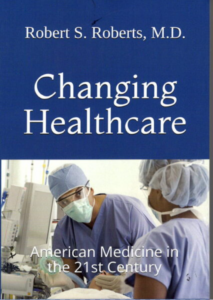When I was young, the only people who had tattoos were mostly sailors and others in the military. Women never had tattoos and tattoo parlors were frowned upon and usually limited to the shady areas of town. Those who had tattoos usually didn’t display them.
Today is a very different world. Now both men and women have tattoos and they display them with pride. It’s a cultural revolution from my earlier days. Fads like this often come and go, but unfortunately, with tattoos it’s a lifetime commitment.
Putting aside the cultural change, what are the health effects of tattoos? Zena le Roux, writing in The Epoch Times, tells us tattoos are not harmless. Many tattoo inks contain chemicals that have been classified as carcinogenic—or cancer-causing—by the International Agency for Research on Cancer. A 2024 study by Swedish researchers found that 21 percent of participants with malignant lymphoma had tattoos compared with 17 percent of controls. The risk was highest—an 81 percent increase—among those who got their first tattoo within two years of diagnosis.
“We know that tattoo ink often contains toxic chemicals and that a significant portion of the injected ink is transported away from the skin by the immune system, which perceives it as a foreign substance,” Christel Nielsen, associate professor and lead author of the study, told The Epoch Times.
Once ink enters the dermis, the layer of skin beneath the outer layer, the immune system attempts to clear it, sending pigment particles to nearby lymph nodes and, potentially, other organs. This may disrupt immune function and trigger systemic inflammation. Over time, the persistent presence of ink in lymphatic tissue could contribute to abnormal immune activity and increase the risk of cancers such as lymphoma and skin cancer.
Is there a correlation between size and risk?
Nielsen’s study found no clear link between the size of a tattoo and lymphoma risk. “We did not observe an increased risk with larger tattoos, which was unexpected,” Nielsen said. “That does not mean such a link doesn’t exist—only that our study design may not have been able to detect it.”
However, Nielsen noted that a January study published in BMC Public Health on the same topic found a different pattern, suggesting that larger tattoos may indeed be associated with a higher cancer risk. The study proposed that larger tattoos might have a stronger effect due to greater overall ink exposure or prolonged exposure from tattoos acquired over time.
Tattoo risks also include infections and allergic reactions that may be difficult to treat, Dr. Bruce Brod, clinical professor of dermatology at the University of Pennsylvania Perelman School of Medicine, told The Epoch Times. Such risks may be amplified by the amount of ink used or how deeply it’s deposited—factors more likely in larger or multiple tattoos.
Does color matter?
Another factor to consider is the color of the tattoo. In a matched analysis comparing individuals with similar characteristics, those with black or gray tattoos had a 23 percent higher risk of lymphoma. Those with both black and colored tattoos had a 21 percent higher risk compared to people without tattoos.
In a broader, less-controlled analysis, the risk was even higher for black and gray tattoos, showing a 32 percent increase, and lower for tattoos with both black and colored ink, with an 11 percent increase. Of note, this broader analysis may have been influenced by other factors, such as lifestyle or health differences between groups. Black ink often contains polycyclic aromatic hydrocarbons, which are known to be carcinogenic and can increase the risk of cancer. Colored inks, on the other hand, may contain primary aromatic amines. Both may contain metals such as arsenic, lead, and chromium.
Some warning signs people with tattoos should look out for when monitoring their skin health include persistent redness, itching, bumps, new pigmented lesions, color change, ulceration, and bleeding. Tattoos can also complicate the early detection of skin cancer, Brod said. Since changes in the skin may be obscured by the tattoo pigment, detecting potential issues becomes more challenging. If there is a new or changing spot within a tattoo—or anywhere on the skin—it’s crucial to seek evaluation from a dermatologist.
Unfortunately, laser removal is not a solution to the problem. Among tattooed participants who underwent laser treatment, the risk of lymphoma was found to be three times higher.





